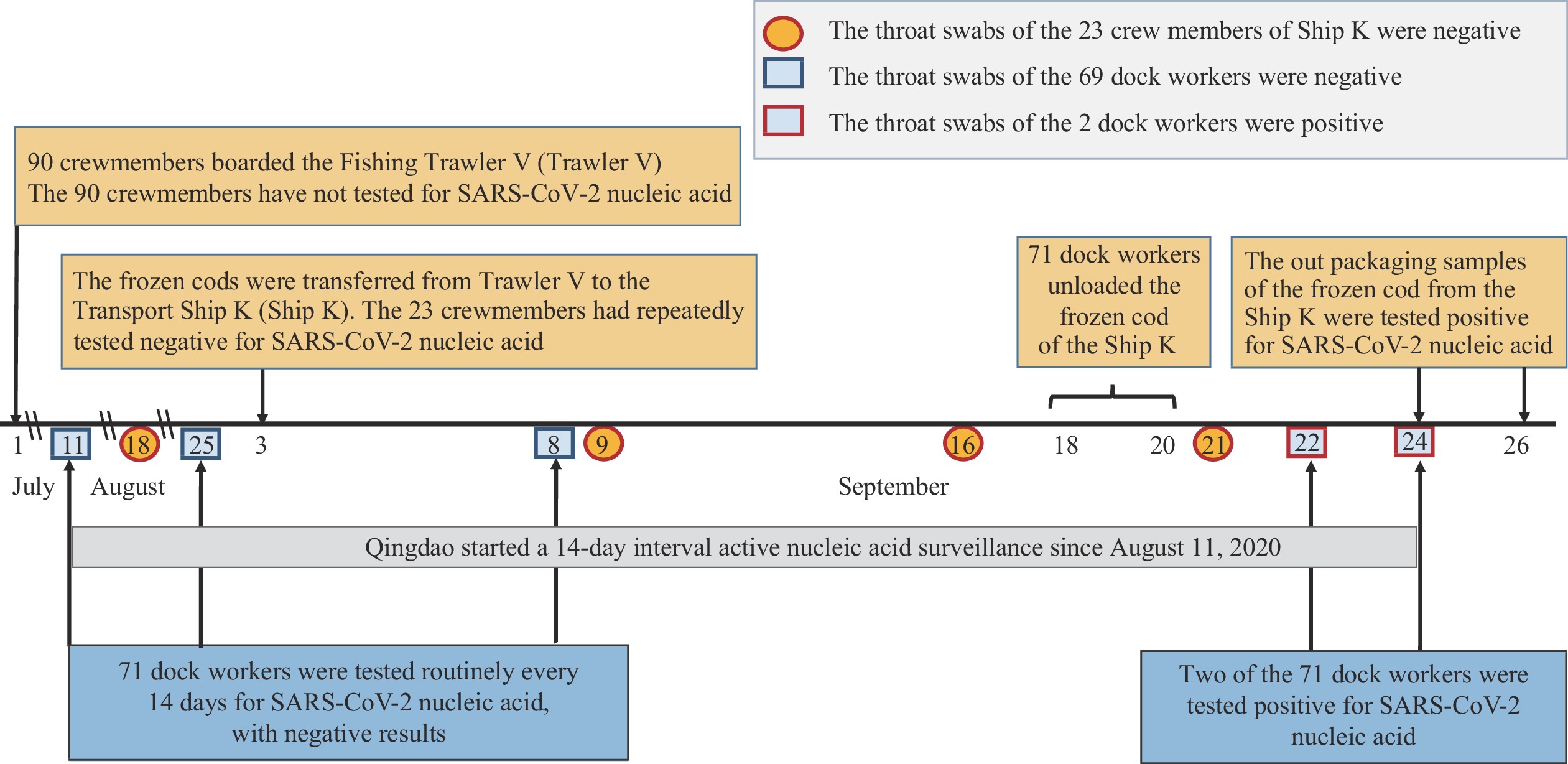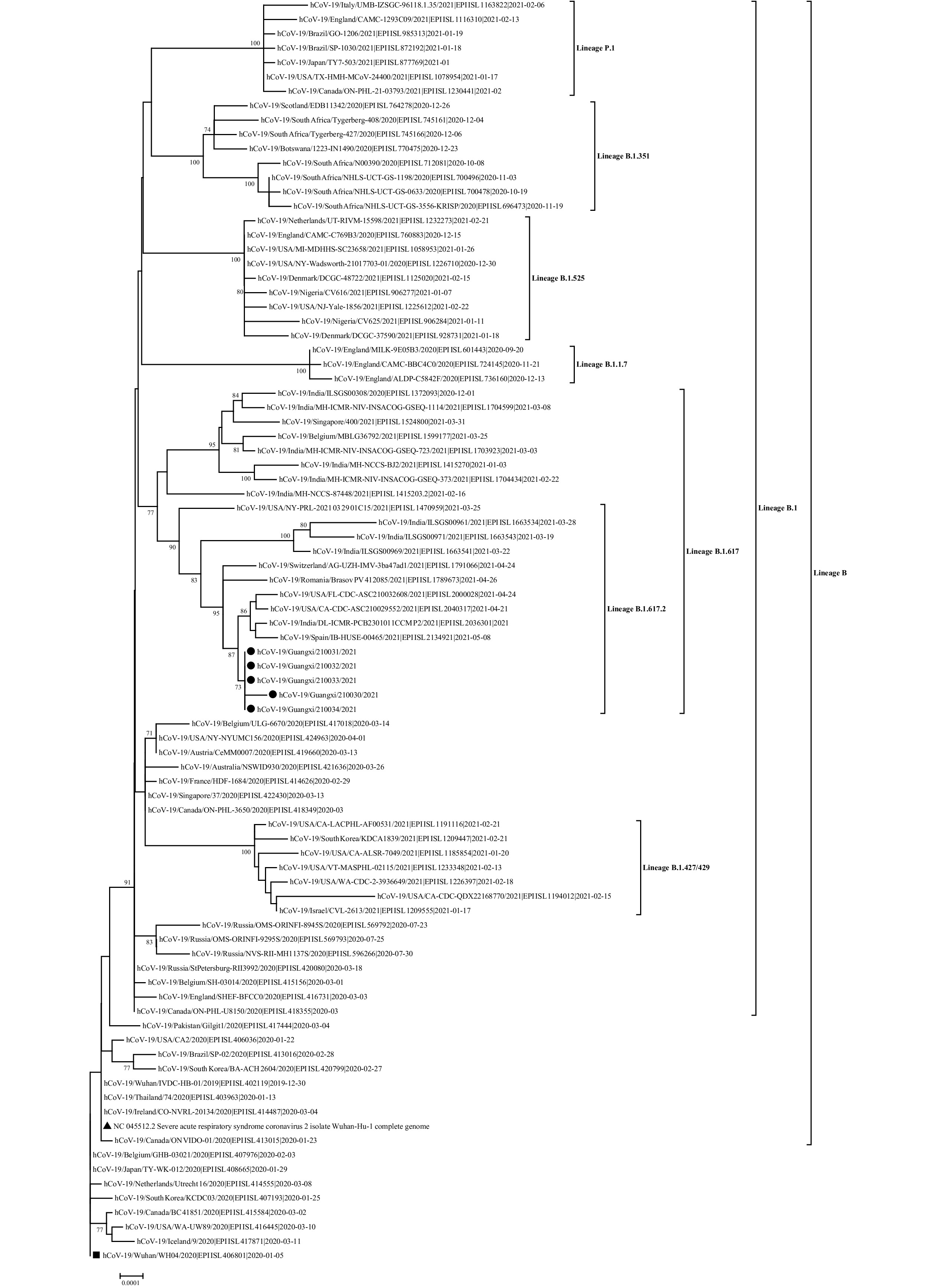2021 Vol. 3, No. 30
What is already known about this topic?
Though coronavirus disease 2019 (COVID-19) has largely been controlled in China, several outbreaks of COVID-19 have occurred from importation of cases or of suspected virus-contaminated products. Though several outbreaks have been traced to severe acute respiratory syndrome coronavirus 2 (SARS-CoV-2) isolated on the outer packaging of cold chain products, live virus has not been obtained.
What is added by this report?
In September 2020, two dock workers were detected as having asymptomatic SARS-CoV-2 infection using throat swabs during routine screening in Qingdao, China. Epidemiological information showed that the two dock workers were infected after contact with contaminated outer packaging, which was confirmed by genomic sequencing. Compared to the Wuhan reference strain, the sequences from the dock workers and the package materials differed by 12–14 nucleotides. Furthermore, infectious virus from the cold chain products was isolated by cell culture, and typical SARS-CoV-2 particles were observed under electron microscopy.
What are the implications for public health practice?
The international community should pay close attention to SARS-CoV-2 transmission mode through cold chain, build international cooperative efforts in response, share relevant data, and call on all countries to take effective prevention and control measures to prevent virus contamination in cold-chain food production, marine fishing and processing, transportation, and other operations.
Attitudes of disapproval toward public health measures led to behaviors that could increase vulnerability to contracting coronavirus disease 2019 (COVID-19).
Chinese citizens rated the necessity of mitigation measures for combating COVID-19 higher than did Americans (4.81 vs. 4.03 on a 1–5 scale). The China–US difference was attributable to 1) Chinese citizens having more confidence in scientists than Americans and 2) Chinese citizens almost invariably accepting the necessity of COVID-19 mitigation measures, regardless of their confidence in scientists.
Building public support for population health measures and public trust in science is crucial for handling epidemic crises.



 Subscribe for E-mail Alerts
Subscribe for E-mail Alerts CCDC Weekly RSS Feed
CCDC Weekly RSS Feed


